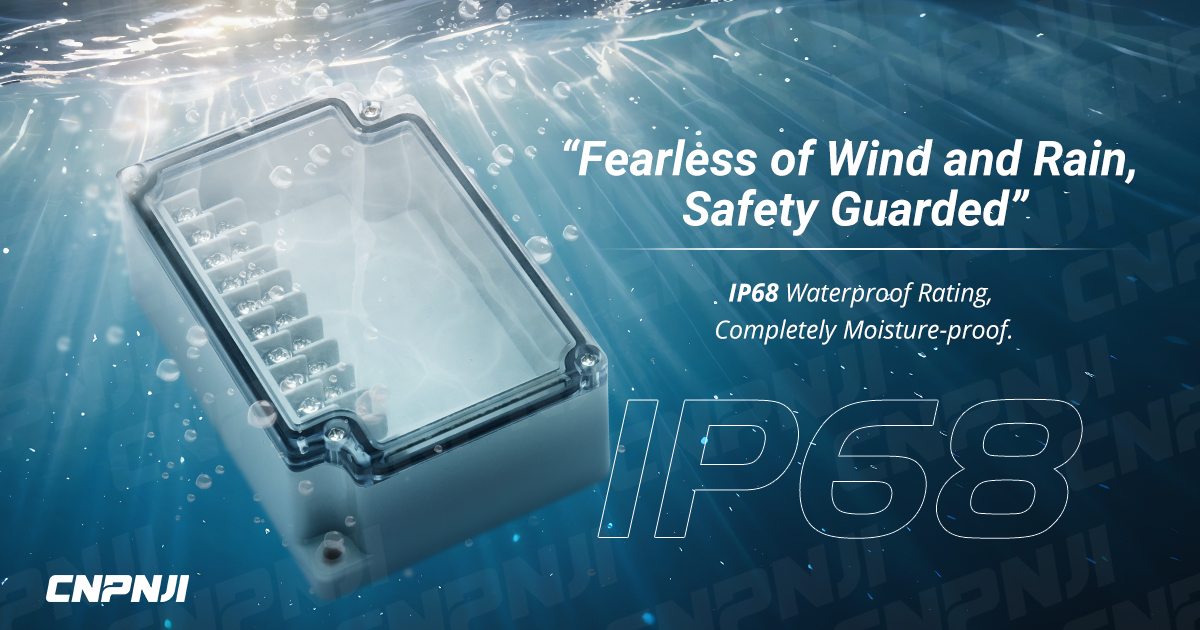Material Selection for Terminal Boxes
Material Selection for Terminal Boxes
Terminal boxes are essential components used for connecting electrical circuits, and the choice of materials significantly impacts the product's overall performance, safety, and lifespan. Below is a detailed analysis of commonly used materials for terminal boxes, along with their advantages and disadvantages.
Engineering Plastics
Common Materials: Polycarbonate (PC), Polypropylene (PP), Polyvinyl Chloride (PVC), etc.
Advantages:
Lightweight and Portable: Engineering plastics have a low density, making them easy to transport and install, especially in confined spaces.
Corrosion Resistance: Various types of engineering plastics have strong resistance to chemicals, effectively preventing damage from corrosion.
Excellent Electrical Insulation: These materials offer good electrical insulation properties, ensuring safe electrical connections and reducing the risk of leakage.
Flexible Design: Engineering plastics can be designed into different shapes and structures to meet various engineering requirements.
Disadvantages:
Limited High-Temperature Performance: In high-temperature or aging environments, engineering plastics may become brittle, affecting their lifespan.
Aluminum Alloy
Advantages:
Strength and Lightweight: Aluminum alloy combines high strength with relatively low weight, allowing it to withstand significant mechanical pressure without deformation.
Good Conductivity: Compared to other materials, aluminum alloys offer better conductivity, making them suitable for electrical connections.
Strong Corrosion Resistance: Particularly when anodized, aluminum alloys develop a protective layer that effectively resists oxidation and corrosion.
Disadvantages:
Relatively High Cost: The production cost of aluminum alloys is higher compared to plastic materials.
Poor Environmental Adaptability: Aluminum alloys may corrode in strongly acidic or alkaline environments, which should be avoided.
Stainless Steel
Advantages:
Excellent Corrosion Resistance: Stainless steel can withstand various corrosive environments, making it particularly suitable for chemical and marine applications.
High Temperature and Abrasion Resistance: It performs well in high-temperature and high-abrasion environments, maintaining its shape and extending its lifespan.
Structural Stability: Stainless steel remains stable under extreme conditions and is less affected by external factors.
Disadvantages:
Higher Costs: Due to higher processing and raw material costs, stainless steel terminal boxes tend to be more expensive.
Processing Difficulty: Processing stainless steel is relatively complex, which may limit design flexibility.
Sealing Materials
Advantages:
Superior Protection: High-quality sealing materials provide excellent waterproof and dustproof capabilities, significantly enhancing the reliability of terminal boxes.
Temperature Resistance: Sealing materials typically withstand high and low temperatures without deformation.
Disadvantages:
Aging Issues: Some sealing materials may degrade when exposed to sunlight over long periods, affecting their sealing performance.
Insulation Materials
Common Materials: Polyester, Polyurethane, Ceramics, etc.
Advantages:
Superior Electrical Insulation: Insulation materials possess high resistance, effectively preventing leakage and short circuits, thus improving safety.
Adaptability to Various Environments: These materials can adapt to multiple electrical environments, ensuring the normal operation of electrical devices.
Disadvantages:
Higher Costs: The production and processing costs of insulation materials can increase the overall product cost.
Weight Issues: Some insulation materials can be heavy, potentially affecting the overall structure.
Comprehensive Considerations
When selecting materials for terminal boxes, several factors must be considered:
Operating Environment: Clarify the usage scenarios of the terminal box, including temperature, humidity, and chemical exposure, to choose suitable materials.
Cost-Effectiveness: Balance the performance requirements with the costs of materials to lower the overall project expenses.
Protection Requirements: Determine the necessary waterproof, dustproof, and impact-resistant features based on specific application needs to ensure reliability under various conditions.
Design Flexibility: Choose materials that meet design requirements, allowing customization to meet different structural and aesthetic needs.
By thoroughly understanding and scientifically applying these materials, terminal boxes can achieve performance standards for specific applications, providing higher quality and safer electrical connection solutions.

